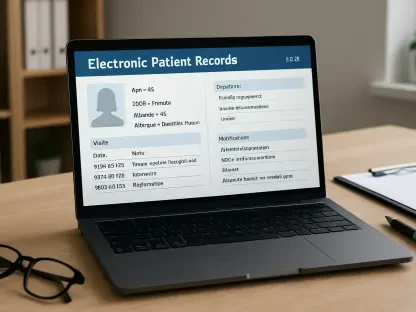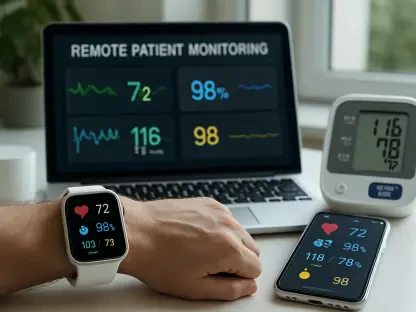In an era where mobile applications promise to simplify everything from managing money to monitoring health, a disturbing trend has emerged that disproportionately affects older adults, who are often targeted by apps quietly harvesting sensitive financial data. Many of these apps, marketed as free and user-friendly tools, exploit seniors who may not fully grasp the risks involved. With a growing reliance on technology for daily tasks, this demographic finds itself at the crossroads of convenience and vulnerability, often lacking the digital literacy needed to navigate complex privacy policies. The consequences can be severe, ranging from targeted scams to outright financial exploitation. This article uncovers the hidden dangers behind seemingly helpful apps, shedding light on how they jeopardize the privacy and security of seniors. By exploring specific app categories and the broader implications of data harvesting, the discussion aims to raise awareness and encourage caution in a digital landscape that often prioritizes profit over protection.
Understanding the Threat
Why Seniors Are at Risk
Seniors often embrace technology with an open mind, eager to use apps that promise to streamline their finances or improve their quality of life, but this trust can come at a steep cost. Many older adults lack the deep understanding of digital tools required to recognize potential threats, making them prime targets for data exploitation. Their unfamiliarity with intricate terms of service agreements means they might unknowingly grant permissions that expose personal and financial details. This vulnerability is compounded by a generational tendency to trust systems and institutions, which app developers can exploit through deceptive practices. The result is a demographic that, while seeking convenience, often finds itself ensnared in a web of privacy invasion without the tools to escape.
Beyond the issue of trust, the digital divide plays a significant role in heightening risks for seniors. Many have not grown up with technology as a central part of life, leading to gaps in knowledge about data security and online privacy. This can make it challenging to discern between legitimate apps and those with ulterior motives. Additionally, physical or cognitive limitations may prevent some from thoroughly reviewing app permissions or seeking assistance when something seems amiss. As a result, seniors are disproportionately affected by data harvesting schemes that capitalize on these limitations, leaving them exposed to financial fraud and predatory marketing tactics tailored to their specific circumstances.
The Hidden Business Model of Free Apps
Many apps marketed as free come with a hidden price tag that seniors may not immediately recognize: the commodification of their personal data. These applications often operate on a business model where user information—such as spending habits, account details, and even location data—becomes the primary currency for profit. Once collected, this data can be sold to third parties like marketers or lenders who use it to build detailed profiles of users. For older adults, this can translate into targeted offers that exploit financial vulnerabilities, such as high-interest loans or unnecessary subscriptions. The lack of upfront cost creates an illusion of safety, masking the true intent behind many of these tools.
The deceptive nature of free apps extends beyond mere data collection to the way information is handled and shared. Seniors might assume their details are secure, but the reality is often far different, with data being funneled to entities they’ve never interacted with directly. This practice is rarely disclosed in a transparent manner, buried instead in lengthy privacy policies that few take the time to read. The impact on older users is particularly severe, as they may not have the resources or knowledge to mitigate the fallout from data exposure. This business model thrives on a lack of scrutiny, exploiting the very users who believe they are benefiting from a helpful service, and underscores the urgent need for greater awareness and protective measures.
Risky App Categories Targeting Seniors
Budgeting and Payment Apps
Budgeting apps, often touted as essential tools for managing finances, can pose significant risks to seniors by meticulously tracking every financial transaction and frequently sharing this data with third parties. These applications log details such as credit card usage, spending locations, and recurring expenses, creating a comprehensive picture of a user’s financial behavior. Once harvested, this information is often sold to marketers or lenders who may target vulnerable individuals with predatory offers, such as high-interest loans. For seniors on fixed incomes, this exposure can lead to financial strain or exploitation, as their limited resources become a focal point for aggressive sales tactics. The promise of better money management often overshadows the hidden cost of privacy invasion inherent in these tools.
Similarly, lesser-known payment apps designed for peer-to-peer transactions present their own set of dangers, particularly due to lax privacy standards that fail to safeguard user data. These platforms collect sensitive information like transaction histories, personal contacts, and even geolocation data, painting a detailed portrait of a senior’s financial life. Such extensive data collection can be misused if it falls into the wrong hands, potentially leading to identity theft or targeted scams. Many seniors, unfamiliar with the intricacies of digital security, may not realize the extent of information they are sharing through these apps. The convenience of quick payments can thus become a gateway to significant financial risk, highlighting the need for caution when selecting and using such services.
Discount and Finance Coaching Apps
Discount and coupon apps, while promoted as money-saving solutions, often build intricate consumer profiles by closely monitoring purchasing habits, which can reveal a senior’s financial priorities and weaknesses. These tools track what users buy, how often, and even where, allowing third parties to craft targeted marketing campaigns that exploit specific vulnerabilities. For older adults, this might mean receiving offers for products or services that seem appealing but come with hidden costs or unfavorable terms. The allure of saving a few dollars can obscure the broader implications of data sharing, leaving seniors unaware that their shopping patterns are being used against them in ways that could undermine their financial stability.
Finance coaching apps, on the other hand, promise personalized advice to improve financial health but often require excessive access to sensitive information, such as bank account details, with little transparency about data protection practices. Seniors, eager for guidance on managing retirement funds or savings, may grant permissions without fully understanding the risks involved. This data can be mishandled or sold, opening the door to exploitation by entities looking to profit from detailed financial insights. The lack of clear safeguards in many of these apps means that the very tools meant to empower users can instead become instruments of vulnerability. Scrutinizing the permissions and policies of such apps is crucial to avoid unintended consequences that could jeopardize long-term financial security.
Health and Wellness Apps
Health and wellness apps often integrate financial data with medical information for features like insurance tracking or expense management, creating detailed profiles that pose unique risks to seniors. By linking health conditions with spending patterns, these apps provide a dual lens into a user’s life that can be exploited by data brokers or scammers. For older adults, who may already face higher medical costs, this combination can lead to targeted offers for dubious health products or services that drain their resources. The sensitivity of the data involved amplifies the potential harm, as breaches or misuse could compromise not just financial security but also personal well-being in profound ways.
The invasive nature of health apps extends to how they can be used to infer vulnerabilities that are particularly relevant to seniors, such as specific medical needs or chronic conditions tied to financial strain. This information, when sold or shared without clear consent, can result in predatory practices tailored to exploit these personal circumstances. Many seniors may not realize the extent to which their health data intersects with financial details in these apps, assuming their information remains private. The reality, however, is that such comprehensive profiles are highly valuable in the data market, often leading to consequences that are difficult to reverse. Awareness of these risks is essential to prevent unintended exposure through apps that appear to prioritize health over profit.
The Bigger Picture of Data Exploitation
Lack of Transparency and Accountability
A pervasive issue across all app categories is the alarming lack of transparency about how user data is collected, stored, and shared, creating a digital environment where seniors are often left in the dark. Privacy policies, typically written in dense, legalistic language, are difficult for many older adults to navigate, obscuring the true extent of data harvesting practices. This opacity means that users may unknowingly consent to having their financial details sold or shared with third parties. Without clear disclosures, accountability for app developers remains minimal, fostering a system where exploitation is not just possible but likely. The absence of straightforward communication about data practices disproportionately harms those least equipped to understand the fine print.
Compounding this problem is the broader lack of regulatory oversight that could hold app developers to higher standards of ethical data handling. Seniors, who may already struggle with digital literacy, are left vulnerable in a landscape where profit often trumps privacy. Even when data breaches or misuse occur, the repercussions for companies are frequently negligible, failing to deter harmful practices. This systemic issue underscores a critical need for reforms that prioritize user protection over corporate gain. Until such changes are implemented, the burden falls on users and their loved ones to remain vigilant, carefully evaluating the apps they trust with sensitive information to mitigate the risks of exploitation.
Steps Toward Safeguarding Privacy
Reflecting on the challenges faced, it became evident that actionable measures were essential to protect seniors from the pervasive threat of data harvesting by mobile apps. Educating older adults about the risks associated with seemingly benign tools proved to be a critical first step, empowering them to make informed decisions about which apps to download and use. Workshops and community programs played a vital role in bridging the digital literacy gap, teaching seniors how to review permissions and recognize red flags in privacy policies. These efforts helped build a foundation of awareness that was often lacking.
Additionally, advocating for stricter regulations on app developers emerged as a necessary response to the transparency issues that had persisted. Pushing for clearer, more accessible privacy disclosures ensured that companies were held accountable for how they handled user data in the past. Encouraging the use of trusted, well-vetted apps over unverified free options also became a priority, reducing the likelihood of exposure to predatory practices. By combining education with systemic change, a safer digital environment was fostered, offering seniors better protection against the hidden dangers of data exploitation while navigating the conveniences of technology.









